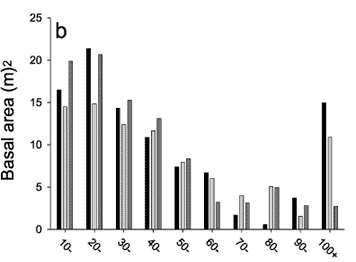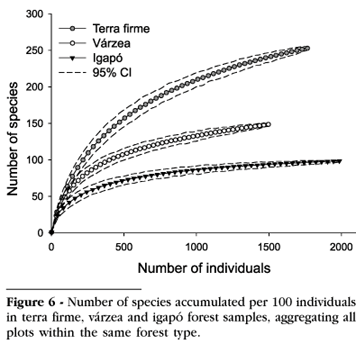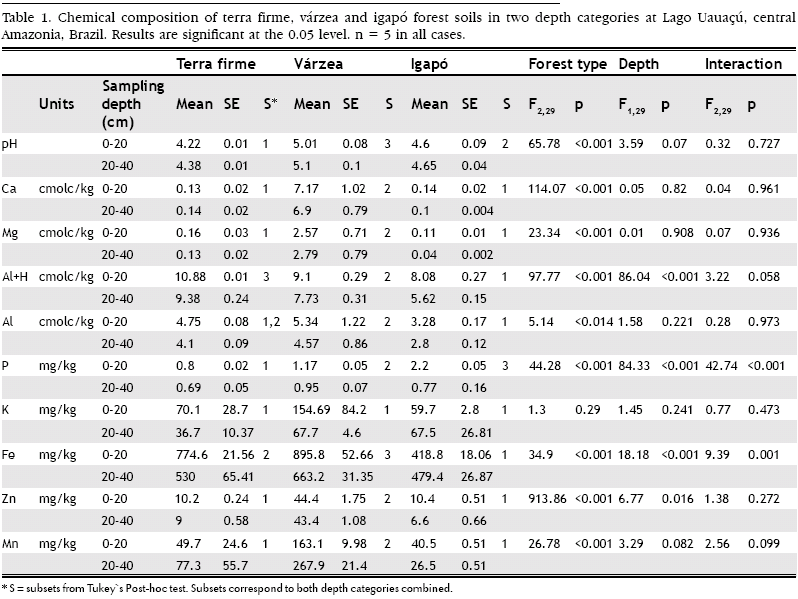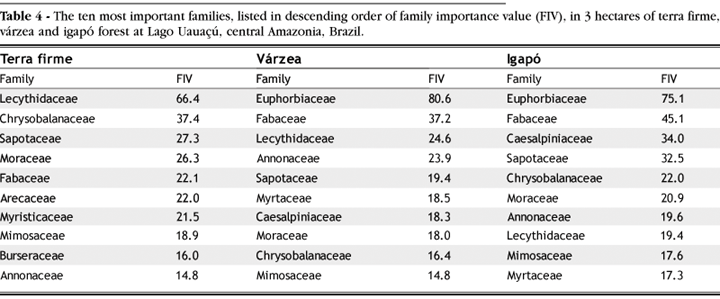Despite a natural history interest in the early 1900s, relatively little ecological research has been carried out in the Rio Purús basin of central Amazonia, Brazil. Here we describe a new study area in the region of Lago Uauaçú with an emphasis on the climate, forest structure and composition, and soil characteristics between adjacent unflooded (terra firme) and seasonally inundated forests; situated within both the white-water (várzea) and black-water (igapó) drainage systems that dominate the landscape. The climate was found to be typical of that of the central Amazon. Várzea forest soils had high concentrations of nutrients, while terra firme and igapó soils were comparatively nutrient-poor. Terra firme forests were the most floristically diverse forest type, whereas várzea was intermediate, and igapó the most species-poor. The Lecythidaceae was the most important family in terra firme while the Euphorbiaceae was the most important in both várzea and igapó. There were significant differences between forest types in terms of number of saplings, canopy cover and understorey density. In contrasting our results with other published information, we conclude that the Lago Uauaçú region consists of a typical central Amazonian forest macro-mosaic, but is a unique area with high conservation value due to the intimate juxtaposition of terra firme, várzea and igapó forests.
Amazonia; floodplain forest; floristic composition; forest structure; soil nutrients













